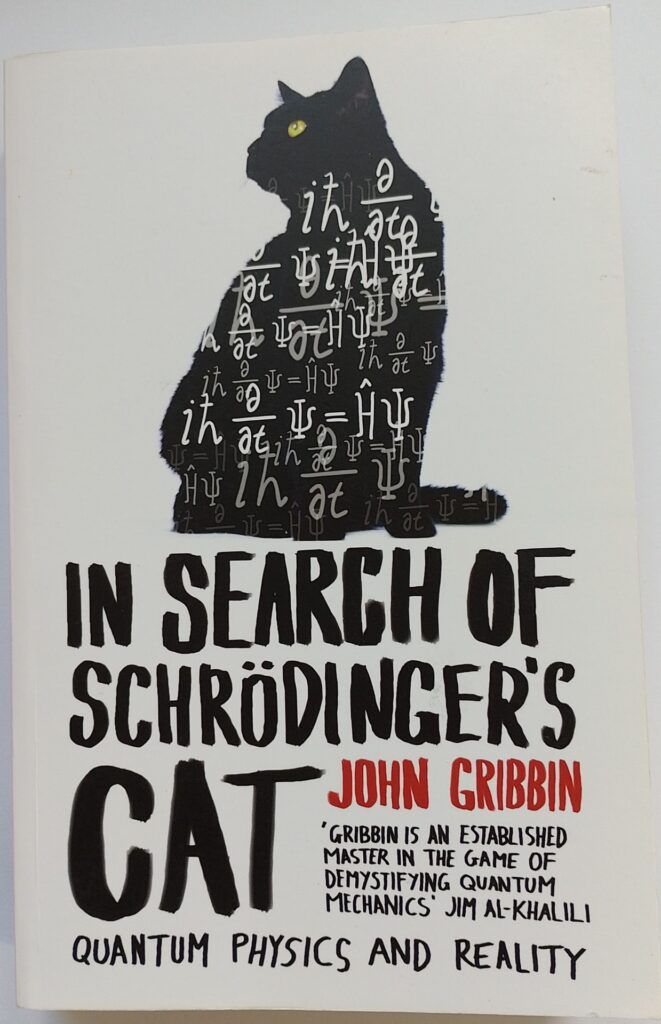First published 1984. Black Swan paperback, 2012, pp 395, c.90,000 words.
This is an attempt to explain quantum mechanics to the layman. Gribbin has written other history of science books and he takes that approach here, giving us much detail on the people who worked in theoretical physics during the first half of the twentieth century.
Quantum mechanics is a highly successful theory, accurately explaining many physical and chemical processes at the atomic level. Unfortunately it has no easy analogue in the world of human scale. It doesn’t ‘make sense’ and therefore is very hard, if not impossible, to ‘explain’, or make accessible to us at any other level. Most scientists, if they need to consider what is happening in their experiments and models at that level simply turn the handle on the quantum mechanical equations, and out pops a result which accords with the result of the experiment. I almost wrote ‘… accords with what they observe’, but of course, that is one of the problems with trying to understand quantum mechanics: the act of observation fixes the outcome of the experiment. Schrödinger’s cat is only either dead or alive once we open the box and observe it. Prior to that it is in both states. This mysterious world had troubled physics for a long time before quantum mechanics was hypothesised by Planck, Bohr and others. Schoolchild physics shows that light in some experiments behaves as a wave, exhibiting diffraction for example, and in others it appears to be made up of particles. This suggests it is actually neither, it is something that has no analogue in the ‘real world’, but exhibits properties that we can understand but which vary depending on the nature of our experiments.
Gribbin is an accomplished writer and his book is easy to read. There are some diagrams to illustrate points but only a couple of mathematical equations. We get a good feel for how the ideas that form late twentieth century physics emerged from the work of, and debates between, early century physicists. It is an engaging story and well-focused on the physics, with only limited asides on the background stories of the people involved, which might have unbalanced the book and made it more personality driven, rather than a serious attempt to bring light onto the unexplainable.
Don’t expect to come away from reading this with a full understanding of quantum mechanics. Just allow it to place the development of the theory in the context of the times and gain some insight into how this strange realm underlies everything at the microscopic level, and be in awe of that.
© William John Graham, May 2022

